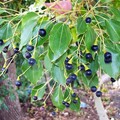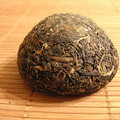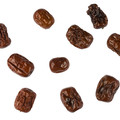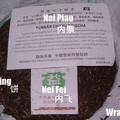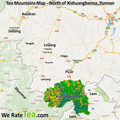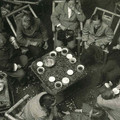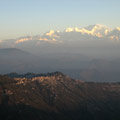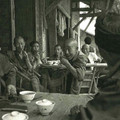Pu-erh tea
„To produce pu'er, many additional steps are needed prior to the actual pressing of the tea. First, a specific quantity of dry máochá or ripened tea leaves pertaining to the final weight of the bingcha is weighed out. The dry tea is then lightly steamed in perforated cans to soften and make it more tacky. This will allow it to hold together and not crumble during compression. “
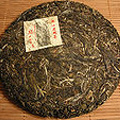
Quotes Tags: Pu-erh
- Discussion: 0 comments
- Write a comment
Teas - Pu-erh
2012 Xiaguan FT Flame Mushroom (Jin Cha)
 0 reviews
0 reviewsThis Xiaguan mushroom shape raw puerh tea is made for Fei Tai (For Taiwan)" means this...
2012 Xiaguan FT Zi Yun Hao Raw Tuo 100g
 0 reviews
0 reviewsThis Xiaguan tuo shape raw puerh tea is made for Fei Tai (For Taiwan)" means this...
2015 Chawangpu Hekai Gushu Xiao Bing
 1 review
1 reviewMaterial for this cake came from Man Nan Lao Zhai in Hekai mountain. Man Nan Lao Zhai...
2015 Spring Man Nuo Gu Shu Mao Cha 50g
 0 reviews
0 reviewsMan Nuo ancient tea gardens, at an altitude of 1266 meters. The tea trees are really...
2013 A few Single Trees (maocha)
 1 review
1 reviewThis tea is a blend of a few single tree teas from Bangwei and Bulang. These trees...
Quotes - Pu-erh
„The terms "Xiao shu" (small tree) and "tai di" (terrace plantation) are often interchangeably used, but they should be given separate meanings. "Tai di" connotes high intensity farming, with the entire slope cleared & terraced to plant hedgerows & use of pesticide & fertilizer. But in many gu shu growing villages, there are also new tea plantations which are too young to be called gu shu (ie. less than 100 years old), but they aren't exactly "tai di" either. Many of these plants are growing next to old trees, in a bio-diverse forest clearing, with lots of space around them, not all are sprayed & fertilized. In the future, they will grow into "gu shu", until then we should call them "shen tai xiao shu" (naturally grown small trees)“
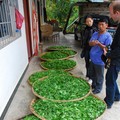
Quotes Tags: Pu-erh, Gushu, Tea production
Video - Pu-erh
Theme
Teas
2011 Mengmao Lao Shu Ye Sheng Xiao Bing 100g
 1 review
1 review2011 Spring harvest. This material come from Baoshan area, 2600 meters high mountain closed with Mengmao...
2013 Wuliang Wild Hongcha
 2 reviews
2 reviewsThis tea is collected from ancient, wild trees on Wuliang mountain. These are truely wild trees, that...
2002 Fu Cha Ju Ailaoshan Ripe Puerh Cake
 2 reviews
2 reviewsThis high quality ripe cake is made of spring large-leaf varietal arbor tea from Ailao mountain. Ailao...
Tea by region
We will help you with tea selection.
Do you like quality loose tea?
We will help you to find the right one for you. Be inspired by tea ratings of other tea lovers. Rating stars could help you.


Review your cup of tea.
Review the tea you are drinking and help other tea lovers to find the right cup of tea.






 Shops
Shops Share on Facebook
Share on Facebook






